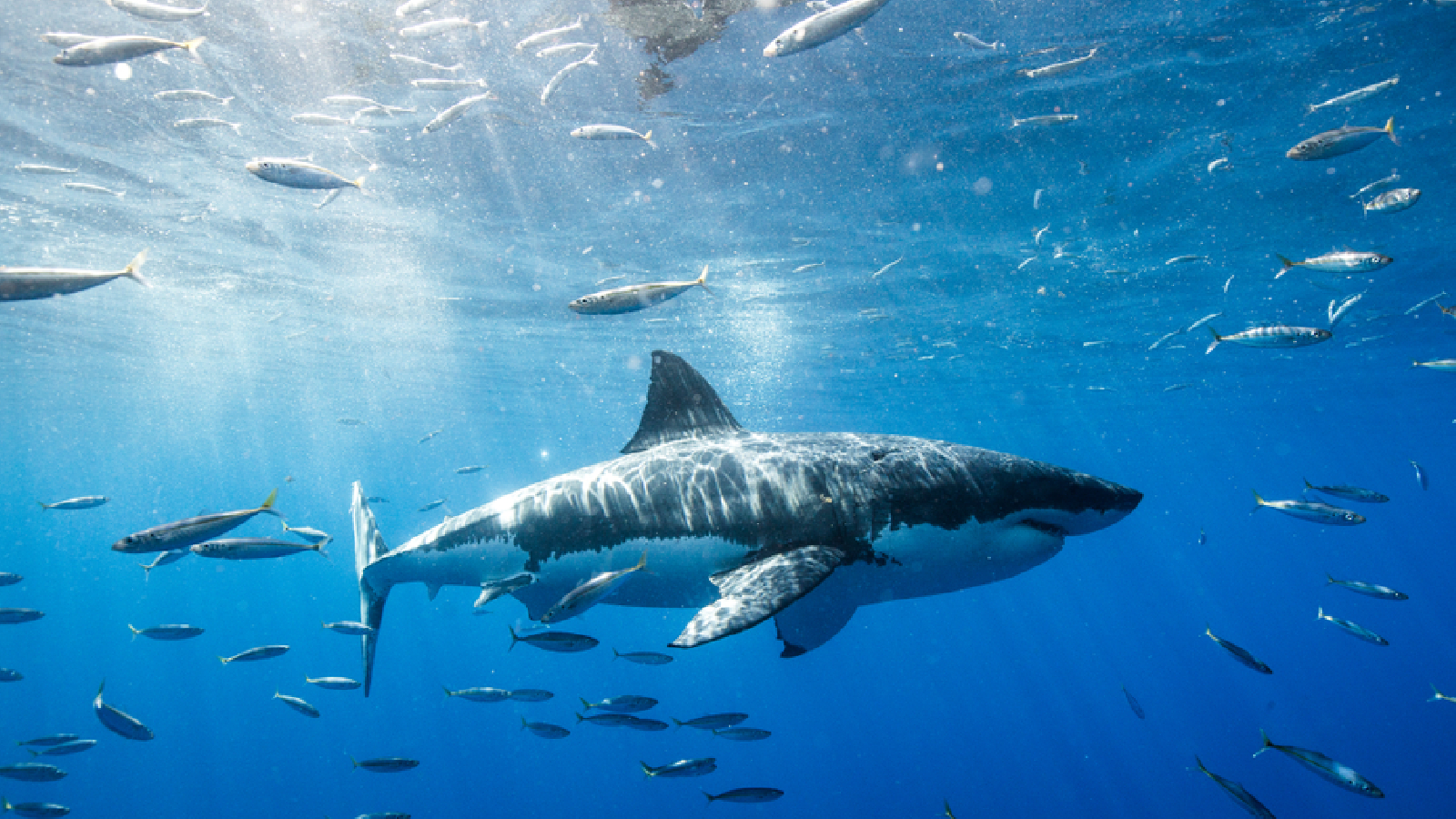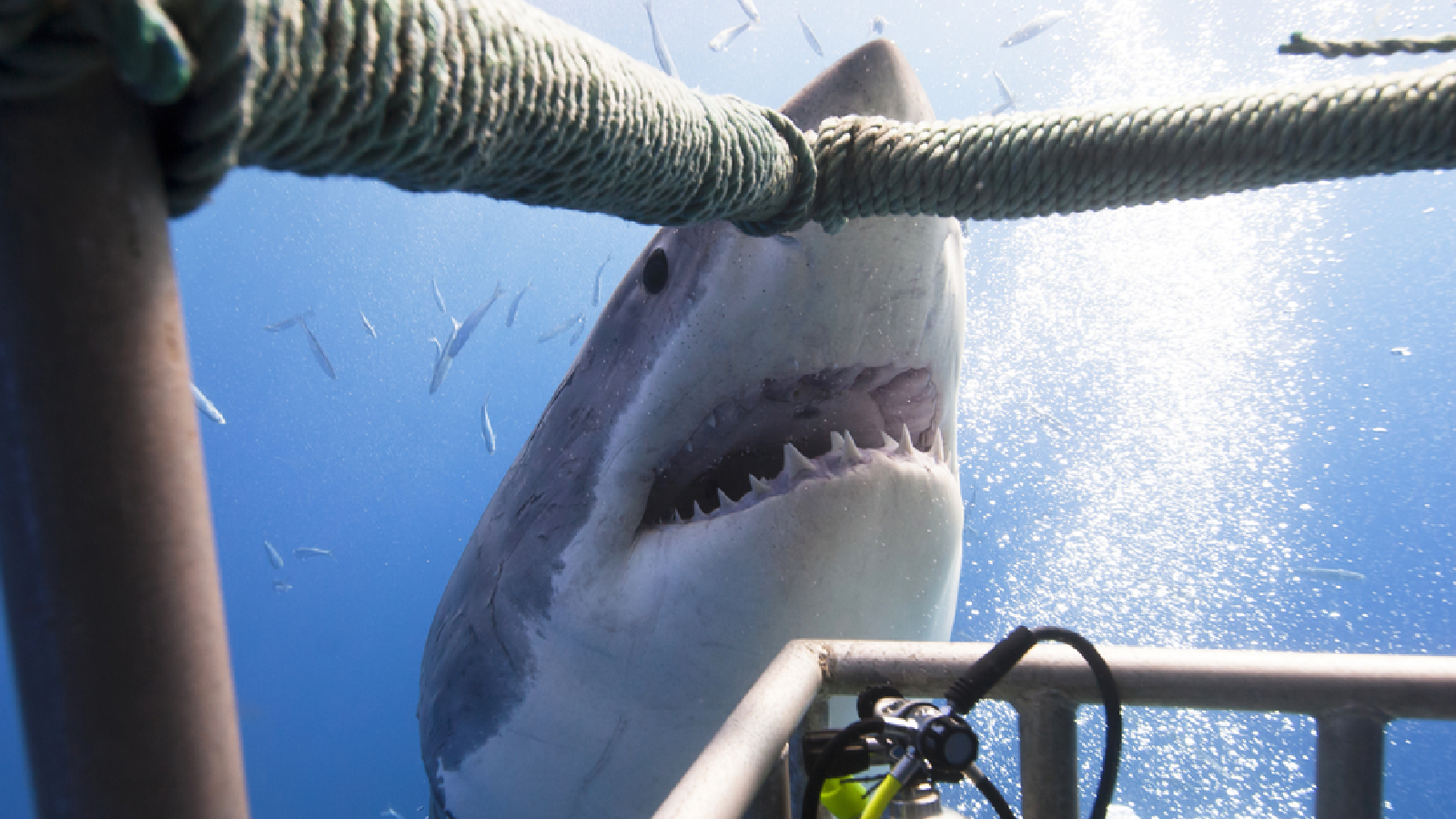In rare attack, great white shark decapitates diver in Mexico. But why?
A great white shark recently decapitated a Mexican fisher as he was diving for shellfish. But what was the reason for the unusually gruesome attack?
A fisher was recently decapitated by a 19-foot-long (5.8 meters) great white shark while diving for ax tripe, a scallop-like mollusk in Mexico. The tragic event made headlines because of the unusual nature of the attack.
Manuel Nieblas López, who was in his 50s, was attacked Jan. 5 in Tobari Bay along the Gulf of California off Mexico. At the time of the attack, López was collecting the shellfish at a depth of between 36 and 59 feet (11 and 18 m) using a surface-supplied air source — a scuba-like apparatus that connects the diver to a compressed air source on a boat through a series of pipes, according to Trackingsharks.com, a website that records all global shark attacks. Two other fishermen, who were on a support boat when the attack happened, witnessed the shark "impressively ripping off his head and biting both shoulders," said Jose Bernal, who spoke for the surviving fishers, according to Trackingsharks.com.
Sharks rarely bite people. When they do, they typically grab the legs or torso after mistaking the person for prey, such as a seal, then release the victim after realizing the mistake. But a shark biting a person's head or shoulders is extremely rare, experts told Live Science.
This type of attack is so rare that Greg Skomal, a marine biologist at the University of Boston and head of the shark program at Massachusetts Marine Fisheries, has never heard of it occurring. "As rare as shark bites on humans can be, decapitation is even more rare," added Chris Lowe, the director of the Shark Lab at California State University, Long Beach.
So what could have caused this unusual type of attack?
Related: Grisly new footage shows orcas attacking a great white shark and eating its liver
As with almost all shark attacks, "mistaken identity" is likely the main reason why the shark attacked López, the experts said.
Get the world’s most fascinating discoveries delivered straight to your inbox.
"If sharks are excited and hungry, they make rash decisions and bite what — in the heat of the moment — they consider a potential prey item," said Gavin Naylor, a marine biologist at the University of Florida who runs the International Shark Attack Files (ISAF) at the Florida Museum of Natural History. "Remember that predators have to think quickly," he added, and if they hesitate it "can leave them hungry."
Sharks don't have great vision, which makes it hard for them to distinguish between prey and humans. Because of this, around 60% of shark attacks recorded by the ISAF occurred in murky waters with reduced visibility, Naylor said. (There is no mention of the water quality in any reports of the most recent attack, so it is not possible to know for sure if this played a role.)
The Sun reported that López may have avoided the attack if he had been wearing a brightly colored wetsuit to help him stand out from seals, which had been advised by local authorities. But the experts are unconvinced by these claims.
"It is a difficult hypothesis to test," Skomal said. "Since most wetsuits are black or darkly colored there is no way to tell statistically whether there is a trend there or not," Lowe added.
However, the diver's fishing activity likely played a role in misleading the shark into thinking he was a prey animal, the experts said.
The smell of the shellfish concentrated around the diver "could have lured the shark to the area," Lowe said. "Any time someone is fishing — whether for fishes or invertebrates like scallops or lobster — sharks are drawn to the smells in the water and the vibrations of struggling animals," Naylor added.
"It is also possible that [due to his position on the seafloor] he resembled a sea lion foraging," Skomal said.
Fishers like López had been warned to avoid fishing in the area due to an increase in shark activity during December and January, when pregnant female sharks enter the area, Newsweek reported. In December 218, another fisher was killed after being attacked by a great white shark shortly after jumping in the water, according to Trackingsharks.com.
Related: Spiraling vortex of 60 sharks rips apart a dead humpback whale in mesmerizing new video
López's position on the seafloor may explain why the shark attacked his head and shoulders.
"It was the most accessible part of the person's anatomy," Naylor said. Most scallopers essentially "walk along the bottom" so the shark could not have approached the victim from underneath and approaching from the side would have likely left the shark open to a potential counterattack from its prey, he added. Lowe agreed that "the person's orientation in the water relative to that of the shark" plays a key role in where they are bitten.
It is also possible that the shark deliberately went for the head "to quickly incapacitate the perceived prey," which has been suggested by some shark attacks on seals, Skomal said.
However, it is hard to say what happened in this case with any certainty.
"In most cases, we just don't know" why a shark attacks someone, Lowe said. "As you can imagine, it is very difficult to discern the motivation of the shark without detailed information of the situation prior to the bite."

Harry is a U.K.-based senior staff writer at Live Science. He studied marine biology at the University of Exeter before training to become a journalist. He covers a wide range of topics including space exploration, planetary science, space weather, climate change, animal behavior and paleontology. His recent work on the solar maximum won "best space submission" at the 2024 Aerospace Media Awards and was shortlisted in the "top scoop" category at the NCTJ Awards for Excellence in 2023. He also writes Live Science's weekly Earth from space series.





